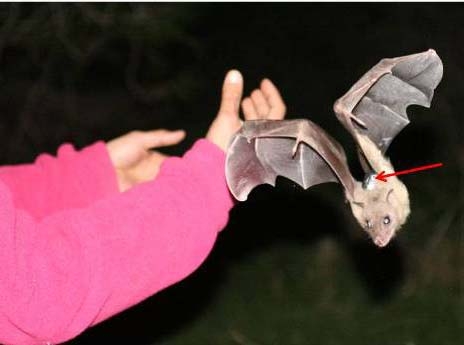GPS Receivers Now Small Enough to Attach to Almost Anything
With a tiny-enough GPS sensor, it’s possible to track the location of anything from your lost keys to a runaway pet. That’s because the world’s smallest GPS receiver is now smaller than a penny and weighs only 0.3 grams. But that’s just the chip – what about all the electronics required to make it truly useful, like a system for remotely downloading the data it has logged?


This GPS logger weighs 10 grams, most of which is battery. Custom-made by Telemetry Solutions of Concord, California, it’s small enough to attach to a fruit bat for research purposes. Data can be downloaded directly from the chip upon recapture, or it can be downloaded wirelessly from up to 500 meters away.

Wirelessly tracking animals has been a mainstay of research for decades, ever since the first bulky radio transponders were attached to large mammals. But GPS loggers this tiny are inspiring a whole new set of questions: everything from where our trash goes to what kind of landmarks bats use for navigation.
Keep Reading
Most Popular
Large language models can do jaw-dropping things. But nobody knows exactly why.
And that's a problem. Figuring it out is one of the biggest scientific puzzles of our time and a crucial step towards controlling more powerful future models.
How scientists traced a mysterious covid case back to six toilets
When wastewater surveillance turns into a hunt for a single infected individual, the ethics get tricky.
The problem with plug-in hybrids? Their drivers.
Plug-in hybrids are often sold as a transition to EVs, but new data from Europe shows we’re still underestimating the emissions they produce.
Stay connected
Get the latest updates from
MIT Technology Review
Discover special offers, top stories, upcoming events, and more.